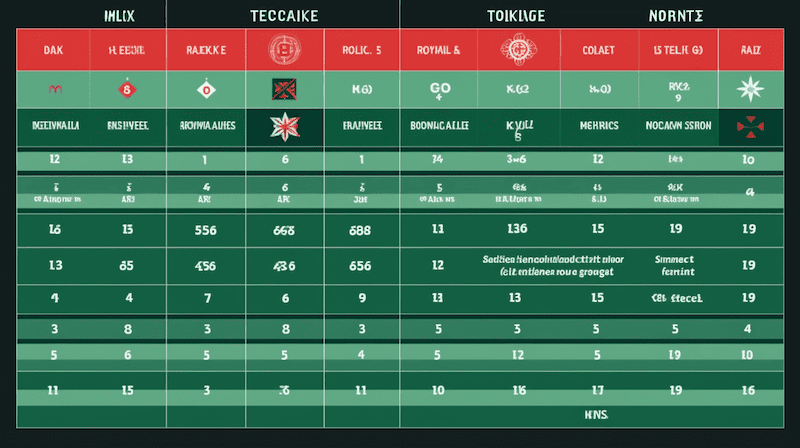Are you ready to take your SEO to the next level? Do you want to learn how to harness the power of seed keywords to give your rankings a boost? Whether you’re a beginner or a pro, this article will teach you how to navigate the SEO landscape with seed keywords. We’ll cover the top keyword research tools, competitor analysis, long-tail keyword generation, and more. With this guide, you’ll be able to use seed keywords to sharpen your SEO strategy and get the results you desire. So let’s get started!
Introduction to seed keywords in SEO
You’ve heard the buzzwords, now, let’s dive deeper into the details of what seed keywords are and how they can help you on your journey. Seed keywords are a crucial part of any SEO strategy. They are the basis for keyword research and the foundation of any successful SEO campaign. These keywords are used by search engines like Google to determine which websites are most relevant to a given query. To put it simply, seed keywords are the starting point for any SEO journey.
Seed keywords are typically determined using a keyword research tool like Google Search Console or Google Ads. This tool allows you to see how many times a particular search query has been made on Google. You can also see the associated search volume and long tail keywords associated with the seed keyword.
Long-tail keywords are specific, longer and more detailed keyword phrases that users are likely to use when they are closer to making a purchase or finding the information they need. These keywords typically consist of three or more words and have lower search volumes compared to shorter, more general seed keywords. However, they often have higher conversion rates and less competition in search engine rankings.
This information can help you narrow down the list of potential keywords you should target in your SEO strategy.
For a business in medical equipment distribution, here are three seed keywords and three possible long-tail keywords for each:
Seed Keyword | Long-tail Keyword 1 | Long-tail Keyword 2 | Long-tail Keyword 3 |
Medical supplies | Medical supplies for hospitals | Wholesale medical supplies distributor | Medical supplies for home care |
Diagnostic equipment | Portable diagnostic equipment for clinics | Diagnostic imaging equipment suppliers | Point-of-care diagnostic devices |
Surgical instruments | Surgical instruments for orthopedic surgery | High-quality surgical instruments manufacturers | Sterilization techniques for surgical instruments |
Once you’ve identified the seed keywords for your SEO campaign, it’s time to start researching the long-tail and related keywords. This is done by looking at the search volume data and seeing which keywords are the most popular. With the keyword research tool, you can also explore the various synonyms and related terms to further refine your list of potential keywords.
By using these tools and techniques, you can uncover the most relevant keywords for your SEO campaign. This will help you create more effective content and optimize your website to show up in the search engine results pages (SERPs). With the right seed keywords, you can make sure that your website is seen by your target audience.
Top keyword research tools for discovery
Discovering the right keywords for your content can be overwhelming, so why not try out some of the top keyword research tools to make the process easier? There are a variety of keyword research tools available that allow you to research and discover relevant seed keywords. Google Keyword Planner is one of the most popular keyword research tools, allowing you to generate keyword ideas and keyword phrases that can be used in your content. It also provides insights into the search volume and competition of the keywords, so you can determine the best ones to use.
Another great tool you can use for keyword research is SEMRush. This tool provides detailed keyword analysis, allowing you to analyze the current keyword landscape and discover the most profitable seed keyword phrases. It also offers a keyword research process to help you find the best keywords to use for your content.
You can also use tools such as Ahrefs and Ubersuggest to find keywords. These tools provide keyword ideas and insights into the competition of the keywords, so you can determine the best ones to use for your content. They also offer insights into the search volume and competition of the keywords, so you can make informed decisions about which keywords to use.
Using keyword research tools can help you discover the right keywords for your content, so you can optimize your content to maximize its visibility and ranking in search engine results. By leveraging these tools, you can identify the most relevant, profitable, and competitive keywords to use in your content. This will help you ensure that your content is seen by the right audience and boosts your SEO efforts.
Here are more keyword research tools, both free and paid, for your reference:-
Free Keyword Research Tools
Google Keyword Planner | A free tool by Google Ads that provides keyword ideas, search volume, and competition data. |
Ubersuggest | A comprehensive keyword research tool that offers keyword suggestions, search volume, and competitive analysis. |
AnswerThePublic | A visual keyword research tool that generates questions and phrases related to your seed keyword using Google Autocomplete. |
Keyword Surfer (Chrome Extension) | A browser extension that shows keyword data, including search volume and related keywords, directly in Google search results. |
Google Trends | A tool that shows the popularity of search queries over time, helping to identify seasonal trends and emerging topics. |
Paid Keyword Research Tools
Ahrefs | A powerful all-in-one SEO toolset that includes keyword research, backlink analysis, and site audit features. |
SEMrush | A comprehensive digital marketing toolkit with keyword research, competitor analysis, and SEO auditing capabilities. |
Moz Keyword Explorer | A keyword research tool with keyword suggestions, search volume, competition, and opportunity scores. |
KWFinder | A user-friendly keyword research tool that specializes in finding long-tail keywords with low competition. |
Serpstat | An all-in-one SEO platform that offers keyword research, competitor analysis, backlink analysis, and site audit features. |
Competitor analysis for uncovering seed keywords
Analyzing your competitors’ content can be a great way to uncover valuable seed keywords that you can use in your own content. Conducting competitor analysis to uncover new seed keywords involves identifying your main competitors, analyzing their keyword strategies, and discovering opportunities to expand your own keyword list. Here is a step-by-step guide for beginners:
Step 1: Identify your main competitors
- Make a list of your direct competitors: These are businesses that offer similar products or services in your industry or niche.
- Search for your seed keywords: Perform a Google search using your main seed keywords to identify websites that rank on the first page. These websites are your primary online competitors.
- Use tools like Ahrefs, SEMrush, or Ubersuggest: Enter your domain into these tools to find competing domains based on shared organic keywords.
Step 2: Analyze competitors’ keyword strategies
- Choose a keyword research tool: Use tools like Ahrefs, SEMrush, or Moz Keyword Explorer to analyze your competitors’ keyword strategies.
- Enter your competitor’s domain: Input your competitor’s website URL into the tool to view their organic keywords, search volumes, and rankings.
- Export the data: Save the keyword data for further analysis and comparison with other competitors.
Step 3: Identify new seed keywords from competitors’ data
- Look for high-volume keywords: Identify keywords with significant search volumes that your competitors are targeting but you haven’t considered yet.
- Analyze keyword relevancy: Ensure the new seed keywords are relevant to your business, products, or services.
- Consider keyword difficulty: Check the competition level for each new seed keyword. Ideally, focus on those with lower competition to increase your chances of ranking higher in search results.
Step 4: Group similar keywords
- Categorize keywords by topic: Group the new seed keywords based on their related topics or themes.
- Identify long-tail variations: Within each group, look for long-tail keyword variations that are more specific and less competitive.
- Prioritize keyword groups: Based on search volume, competition, and relevancy, prioritize the keyword groups that offer the best opportunities for your SEO strategy.
Step 5: Create a content plan around new seed keywords
- Develop content ideas: For each prioritized keyword group, brainstorm content ideas that address users’ search intent and provide valuable information.
- Plan your content calendar: Schedule the creation and publication of content around the new seed keywords to ensure consistent output and coverage of essential topics.
- Optimize content for SEO: When creating content, incorporate the new seed keywords and their long-tail variations in the title tags, meta descriptions, headings, and body content.

Performing competitor analysis can be a great way to uncover valuable seed keywords that you can use in your own content. By analyzing your competitors’ content and identifying the keywords and phrases they are using, you can gain insights into which keywords and phrases are most effective for your own content. This can help you optimize your content for search engines and drive more traffic to your website.
Generating long-tail keywords from seeds
Once you’ve identified your seed keywords, you can use them to generate long-tail keywords that will help you drive more targeted traffic to your website. To do this, you can use a keyword planner tool such as the Google Keyword Planner, Keyword Surfer, KWFinder and etc, to uncover relevant seed keywords and keyword phrases. This keyword research strategy will allow you to generate long tail keywords that are more specific and targeted than the seed keywords you started with.

Once you have a list of relevant seed keywords, you can use the keyword planner tool to expand your keyword list. The tool will help you create variations of your seed keywords that are more specific and targeted. You can also use the keyword planner tool to explore related keyword phrases that you may not have thought of previously.
Here is a step-by-step guide on how to generate long-tail keywords from seed keywords using Keyword Surfer (Chrome extension) and KWFinder:
Note: Skip the steps accordingly if you use only one tool: Keyword Surfer or KWFinder.
Step 1: Install Keyword Surfer (Chrome extension)
- Visit the Chrome Web Store and search for “Keyword Surfer.”
- Click on “Add to Chrome” to install the extension.
- Once installed, you will see the Keyword Surfer icon in your browser toolbar.
Step 2: Generate long-tail keywords with Keyword Surfer
- Perform a Google search using your seed keyword.
- Keyword Surfer will display keyword data, including search volume, directly in the search results.
- Look for the “Keyword Suggestions” section in the right sidebar of the search results page.
- Browse the list of suggested long-tail keywords, considering their search volume and relevancy to your seed keyword.
- Take note of relevant long-tail keywords for further analysis.
Step 3: Sign up for a KWFinder account
- Visit the KWFinder website at https://kwfinder.com/.
- Sign up for a free or paid account, depending on your needs and budget.
- Log in to your KWFinder account.
Step 4: Generate long-tail keywords with KWFinder
- Enter your seed keyword in the search bar and click “Find Keywords.”
- KWFinder will display a list of long-tail keyword suggestions, their search volume, keyword difficulty, and other metrics.
- Use filters to narrow down the suggestions based on search volume, keyword difficulty, or other criteria.
- Analyze the list of long-tail keywords, considering their relevancy, search volume, and competition.
- Add relevant long-tail keywords to your list for further analysis and content planning.
Step 5: Prioritize long-tail keywords for content creation
- Review the long-tail keywords generated from both Keyword Surfer and KWFinder.
- Prioritize the long-tail keywords based on their relevancy to your business, search volume, and competition level.
- Develop content ideas and a content calendar around the prioritized long-tail keywords, ensuring they are incorporated into your SEO strategy.
By following this step-by-step guide, you can effectively generate long-tail keywords from seed keywords using Keyword Surfer (Chrome extension) and KWFinder, helping you expand your keyword list, target more specific search queries, and improve your website’s search engine rankings.
Using the keyword planner tool to generate long-tail keywords and identify competitor keywords is an important part of any SEO strategy. With the right keyword research strategy, you can drive more targeted traffic to your website and increase your online visibility. By utilising the keyword planner tool, you can create a comprehensive SEO strategy that will help you to reach your desired audience and increase your website’s visibility.
Harnessing Google tools to refine keywords
Unlock the power of Google to refine your keywords and make the most of your online presence! With the right tools, you can easily use seed keywords to identify and target the terms that will work best for your website. Here are some tips to help you get started with Google tools:

- Step 1: Analyze the SERPs to understand the competitive landscape
- Perform a Google search using your seed keyword.
- Examine the top-ranking websites on the first page of the search results, taking note of the types of content (e.g., blog posts, product pages, videos) and the level of optimization.
- Look for commonalities among the top-ranking websites, such as domain authority, backlink profiles, or content length.
- Identify gaps or opportunities in the existing content that you can exploit to create more value for your target audience.
- Sign up for a free Google Ads account if you haven’t already.
- Access the Keyword Planner tool within the Google Ads dashboard.
- Enter your seed keyword in the “Discover new keywords” section to generate new keyword ideas.
- Review the list of suggested keywords and take note of their search volume, competition level, and estimated cost per click (CPC).
- Select relevant keywords with high search volume and low-to-moderate competition to add to your list of seed keywords.
- Type your seed keyword into the Google search bar.
- As you type, Google will display autocomplete suggestions based on popular search queries related to your seed keyword.
- Take note of relevant autocomplete suggestions that could serve as additional seed keywords or long-tail keyword variations.
- Repeat this process for each seed keyword on your list to uncover more ideas.
- Go back to the Google Ads Keyword Planner tool.
- Enter your list of seed keywords in the “Get search volume and forecasts” section.
- Analyze the estimated cost per click (CPC) for each seed keyword, which indicates how competitive they are in the paid advertising landscape.
- Prioritize seed keywords with lower CPC values, as they may have less competition and be more cost-effective for your SEO and PPC campaigns.

By following these steps, even beginners can gain a deeper understanding of the competitive landscape for their seed keywords and discover new keyword opportunities. Leveraging tools like Google Ads Keyword Planner and autocomplete features will help expand your list of seed keywords while providing valuable insights into search volume, competition, and potential advertising costs.
Getting the most out of your seed keywords requires targeted research and an understanding of the search engine landscape. By harnessing the power of Google tools, you can easily identify the keywords that will help your website stand out and give you the edge you need to increase your online presence. With the right tools, you can quickly refine your seed keywords to get maximum value from your search engine optimization efforts.
Integrating seed keywords for better visibility
Stop wasting time trying to figure out the tangled web of SEO and start integrating your seed keywords for better visibility – it’s a lot easier than it looks! With the right search terms and related keywords, your SEO efforts can be greatly improved. When you take the time to build your target keywords and meta tags into your content strategy, you’re setting yourself up for success. It’s important to remember that seed words are just the beginning – you need to look for related words and phrases that will help you rank higher in search engine results. Using tools like Google’s Keyword Planner can help you refine your efforts and create a content strategy that will make your SEO efforts more successful.
Integrating seed keywords into your SEO strategy isn’t as hard as it may seem. Taking the time to research related terms and phrases to your seed words can help you craft content that will draw more attention from search engines. Once you’ve identified these terms, you should incorporate them into your content, meta tags, and other SEO-related elements. This will help you create a content strategy that is tailored to the needs of your target audience and will help you achieve better search engine rankings.
Incorporating seed keywords into your content, meta tags, and other SEO-related elements is crucial for optimizing your website’s search engine rankings. Using the example of a Singapore-based medical equipment distribution business with the seed keyword “medical supplies,” here are some ways to incorporate the keyword into various elements:
1. Title tag
The title tag is an essential element for SEO as it helps search engines understand the topic of your page. Make sure to include the seed keyword in your title tag while keeping it relevant and engaging.
Example: “Medical Supplies in Singapore: Premium Medical Equipment Distribution”
2. Meta description
The meta description provides a concise summary of your webpage content. Incorporate the seed keyword naturally within the 150-160 character limit to improve relevancy and click-through rates from search results.
Example: “Discover high-quality medical supplies in Singapore from our trusted medical equipment distribution company. Browse our extensive product range today!”
3. URL structure
Include the seed keyword in the URL structure to enhance the page’s relevancy for search engines and improve user experience.
Example: “www.example.com/medical-supplies-singapore”
4. Headings (H1, H2, etc.)
Use the seed keyword in your main heading (H1) and sprinkle variations of it in subheadings (H2, H3, etc.) throughout your content. This improves the content’s organization and makes it easier for search engines to understand the topic.
Example:
- H1: “Medical Supplies in Singapore: Your One-Stop Shop for Medical Equipment”
- H2: “Types of Medical Supplies We Offer”
- H3: “Home Medical Supplies and Equipment”
- H3: “Professional Medical Supplies for Clinics and Hospitals”
5. Content
Incorporate the seed keyword and its variations naturally throughout your content. Avoid keyword stuffing and focus on providing valuable information to your target audience.
Example: “Our Singapore-based medical equipment distribution company specializes in providing a wide range of medical supplies for both home and professional use. We pride ourselves on offering top-quality products, competitive pricing, and exceptional customer service.”
6. Image file names and alt text
Optimize your images by including the seed keyword in the file name and alt text. This helps search engines understand the context of the image and improves the page’s overall SEO.
Example:
- File name: “medical-supplies-singapore.jpg”
- Alt text: “A variety of medical supplies available in Singapore”
7. Internal and external links
Use the seed keyword as anchor text for internal links to related pages on your website or external links to authoritative sources. This strengthens your site’s internal linking structure and adds credibility to your content.
Example: “Learn more about our <a href=’/medical-supplies-singapore’>medical supplies in Singapore</a> and how they can benefit your healthcare facility.”
By incorporating the seed keyword “medical supplies” into various SEO-related elements, you can improve your website’s search engine rankings and increase visibility for users searching for medical equipment distribution services in Singapore.
Seed keywords are an important component of any SEO strategy, but they can’t do the job on their own. Taking the time to research related terms and phrases and incorporate them into your content and meta tags will help you create a content strategy that is tailored to your target audience and will ensure that you achieve better search engine rankings. With the right search terms and related keywords, you can increase the visibility of your website and get the results you’re looking for.
Targeting seeds for maximum SEO impact
Optimizing seed keywords effectively is crucial for maximizing the impact of your SEO strategy, as it helps improve search engine rankings and drive targeted traffic. To achieve this, prioritize high-relevance and low-competition keywords that are closely related to your business, products, or services. Analyze the search intent behind these keywords to understand whether users are seeking informational, navigational, transactional, or commercial investigation queries. By tailoring your content to satisfy user needs, you can create valuable and engaging content that incorporates seed keywords and related long-tail keywords naturally.
In addition to creating quality content, optimizing on-page elements such as title tags, meta descriptions, headings, and URLs is essential for enhancing your web page’s relevancy for search engines. Be mindful of keyword density to avoid overuse and focus on providing a positive user experience by ensuring easy navigation, responsive design, and fast loading times for your website. Strategic internal and external linking can also help strengthen your site’s structure, add credibility to your content, and provide value to readers. Utilize your seed keywords as anchor text when linking to relevant pages or authoritative sources.
Monitoring and analyzing the performance of your seed keywords and associated content is vital for the ongoing success of your SEO efforts. Regularly track keyword rankings, organic traffic, and user engagement metrics using tools like Google Analytics or SEMrush. Adjust your strategy based on data-driven insights, enabling you to continually refine your approach to seed keywords and improve your website’s overall search engine performance.
Balancing primary, related, and long-tail keywords
Achieving a balanced approach to using primary, related, and long-tail keywords is essential for a successful SEO strategy. Primary keywords are the main focus of your content and typically have higher search volume and competition. Related keywords are variations or synonyms of the primary keywords that help provide context and support the overall topic. Long-tail keywords, on the other hand, are more specific and often have lower search volume but less competition, making them easier to rank for.
To create a well-rounded keyword strategy, start by identifying your primary keywords and incorporating them into prominent on-page elements such as title tags, headings, and meta descriptions. Next, weave related keywords throughout your content to reinforce the main topic and capture additional search traffic. Finally, integrate long-tail keywords into your content in a natural and contextual manner. These long-tail keywords can help you target niche audiences and capture traffic from users with more specific search queries.
A balanced keyword strategy not only improves your website’s search engine rankings but also enhances user experience by providing comprehensive and relevant content. By combining primary, related, and long-tail keywords, you cater to a wider range of search intents and increase the likelihood of driving targeted traffic to your website. Continually monitor and analyze your keyword performance to ensure an optimized approach that supports both search engines’ and users’ needs.
Finding the right balance of primary, related, and long-tail keywords can take some trial and error. But with a little experimentation, you can find the perfect mix of keywords to bring new visitors to your website. Start exploring new keywords and phrases related to your website and see what kind of results you can get!
Measuring SEO Success through keyword performance
Gauge how effective your SEO efforts are by measuring your keyword performance – it’s easier than you think! The performance of specific keywords, key phrases, and search queries can help you understand how well your SEO efforts are doing and if your marketing strategies are working. To measure SEO success, look at data from Google Trends, which can tell you how often your keywords are being used in searches. This data will help you create content that is tailored to the needs of your audience and their search queries.
Analyzing keyword performance also helps you uncover new opportunities to increase your website’s visibility and traffic. You can look for seasonal, regional, or global trends that may be influencing the search queries your audience is using. By looking for changes in search behaviour, you can create content that is tailored to seasonal changes in demand. This will help your website appear more often in search results, leading to increased visibility and organic traffic.
You can also measure keyword performance by looking at the number of clicks and impressions your website gets in Google Analytics. This data will help you understand how effective your content is at capturing attention and helping people find what they are looking for. By understanding how often people are clicking on your website, you can adjust your SEO strategies and create content that is better optimized for search engines.
Measuring keyword performance is a great way to make sure your SEO efforts are paying off and to adjust your content strategy as needed. This data will help you understand the needs of your audience, optimize your content to serve those needs better, and increase your website’s visibility in search results. With the right data and insights, you can develop powerful SEO strategies that will help your website stand out in the search engine landscape.
Adapting SEO strategy for niche markets
Uncovering success in niche markets takes a tailored SEO strategy – and if you’re not sure where to start, you’re in for an exciting journey! To maximize SEO performance in niche markets, it’s important to understand the related terms, related searches, and popular searches associated with the target audience. By researching these keywords, you can gain valuable insights into the market and identify the right keywords to drive a successful SEO campaign.
It’s also a good idea to compare the keyword research to your competitors to get an understanding of how they are positioning themselves in the market. This can help refine your strategy and ensure that you are targeting the right keywords. You can also use search engine tools to analyze the competitive landscape further and discover new opportunities.
Once you have identified the right keywords, you can then build an SEO strategy to position yourself in the niche market effectively. This may involve creating content targeted at the niche audience, optimizing your website for the identified keywords, and engaging in social media campaigns to drive organic traffic.
It’s a process that requires an understanding of the niche market and an ability to keep up with the latest trends. With the right strategy, you can gain valuable insights into the market and drive the success of your SEO campaigns. All it takes is a bit of research and creativity to make it happen!

Conclusion
You’ve done it! You’ve successfully navigated the ever-changing world of SEO and seed keywords. You’ve found the right tools, identified your competitors, generated long-tail keywords, and refined your strategy. You’ve balanced primary, related, and long-tail keywords to maximize SEO impact. You’ve even measured SEO success through keyword performance. You’re a real SEO guru now! But don’t get too cocky. The landscape of SEO is constantly shifting, so stay on your toes. Keep up with trends, tweak your strategy, and you’ll stay at the top of your game.